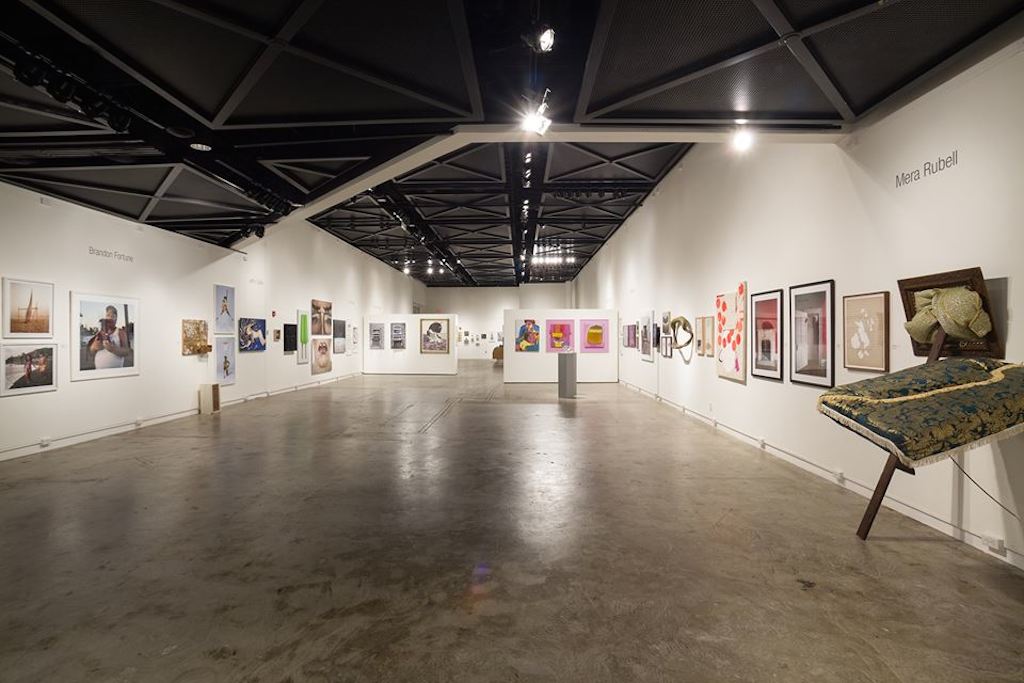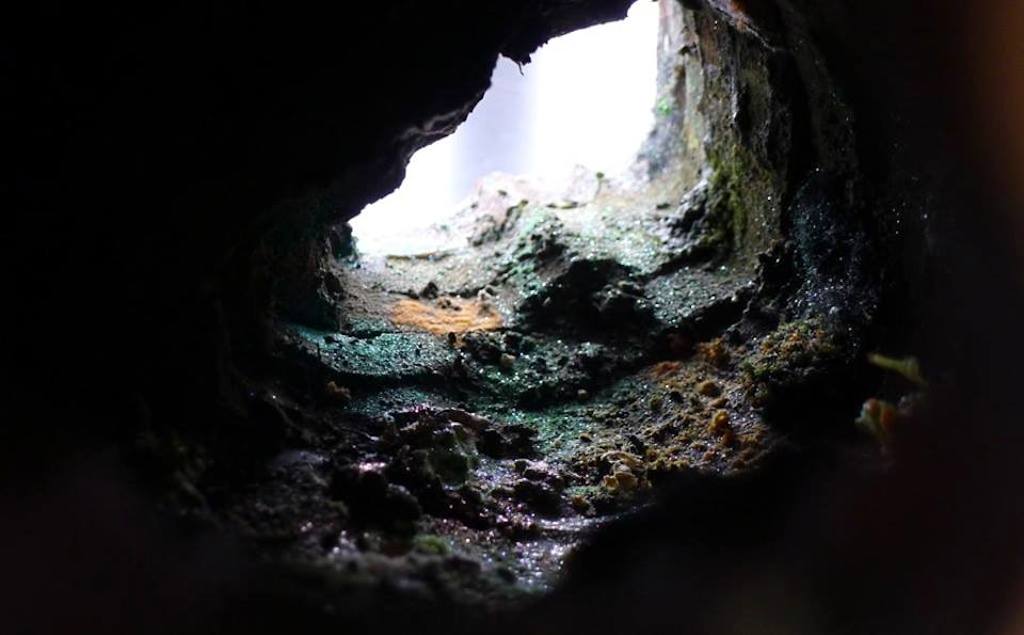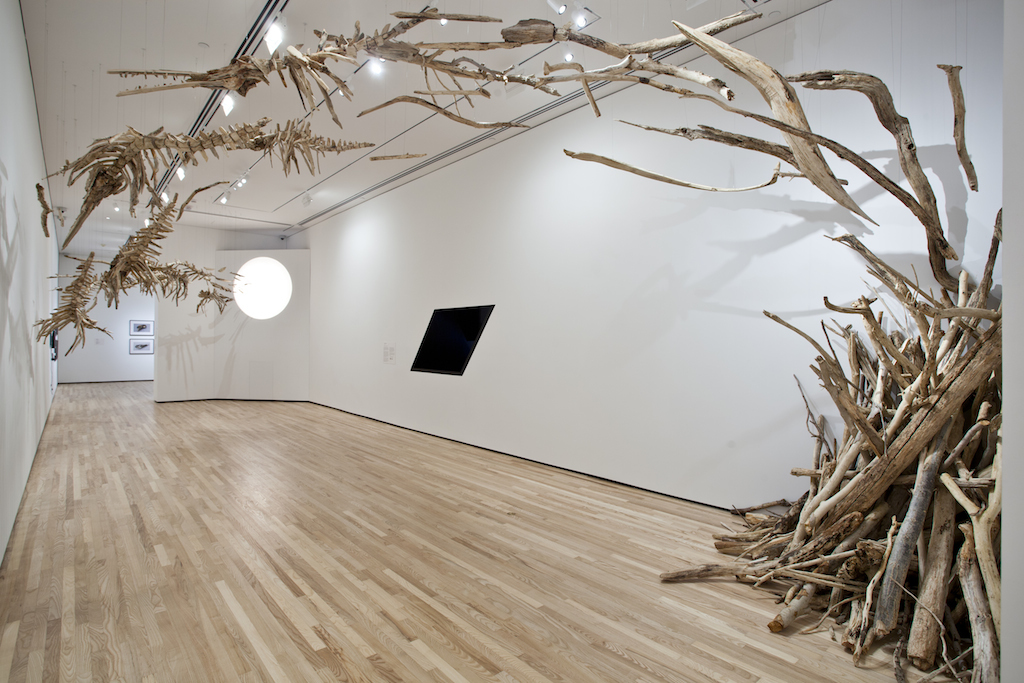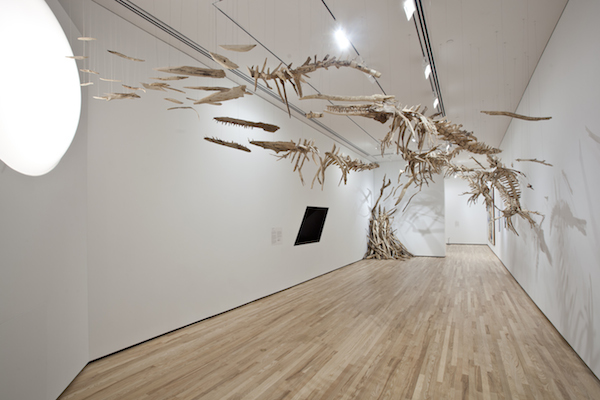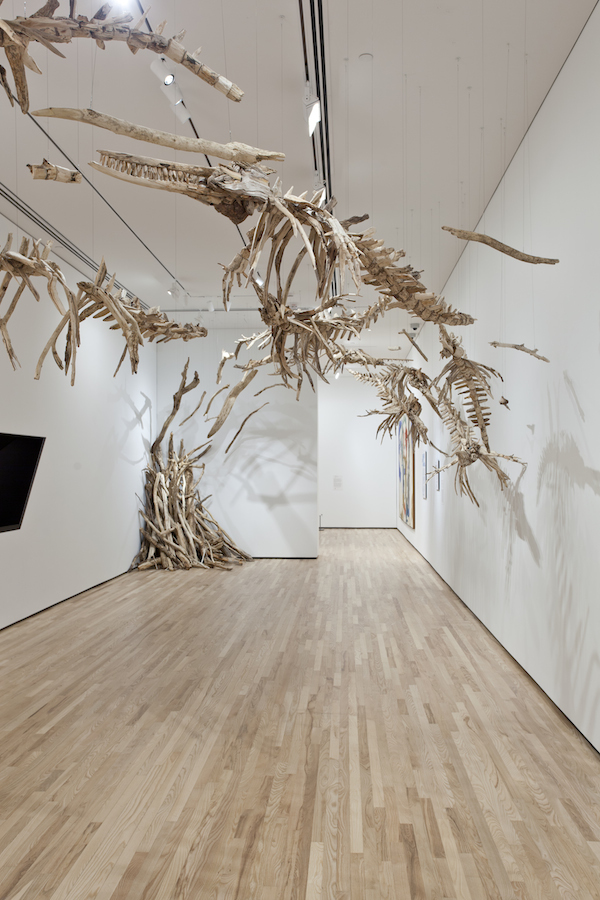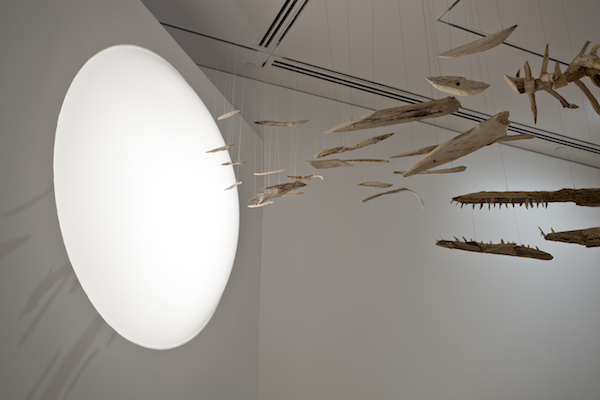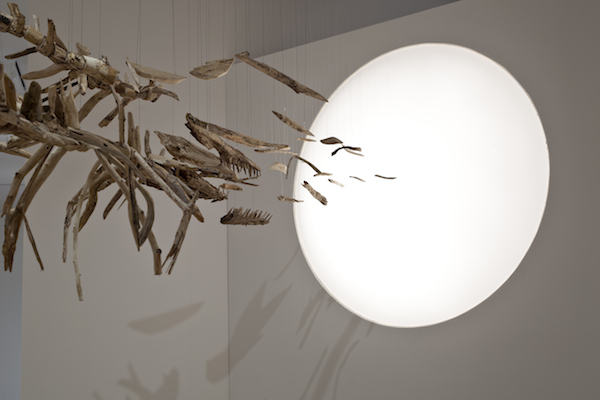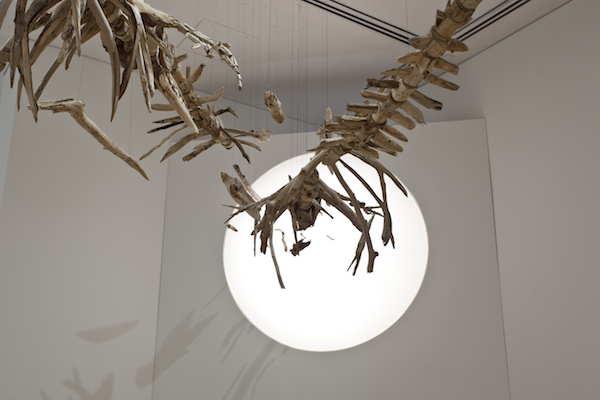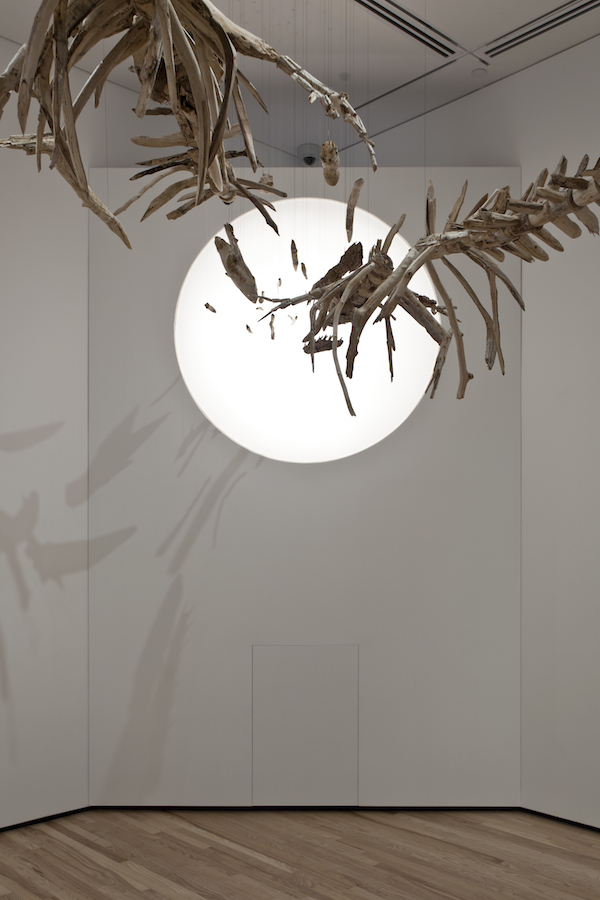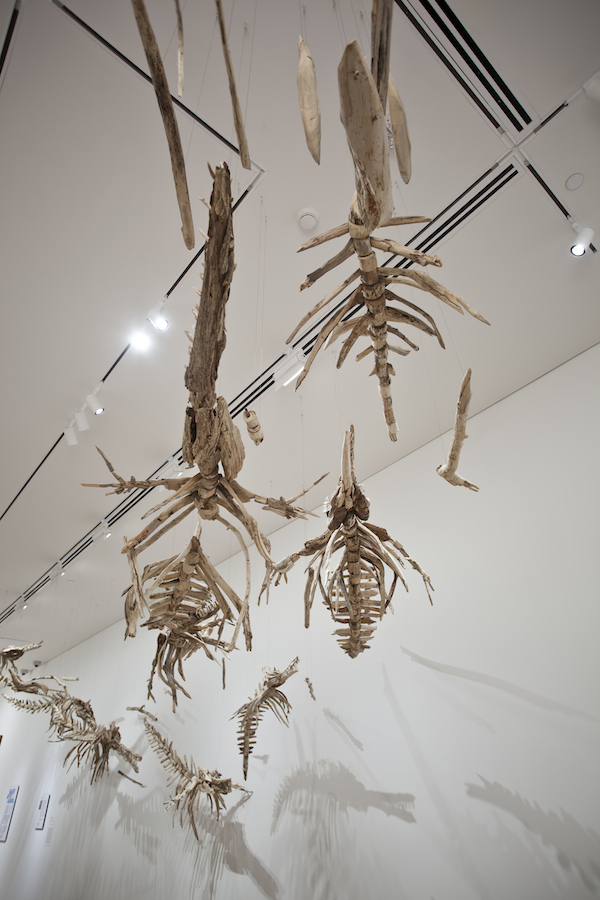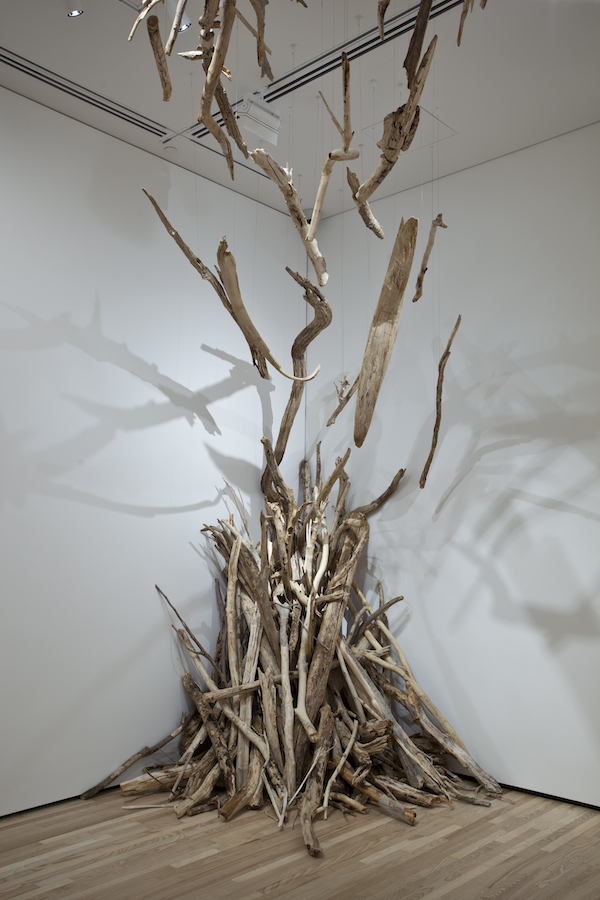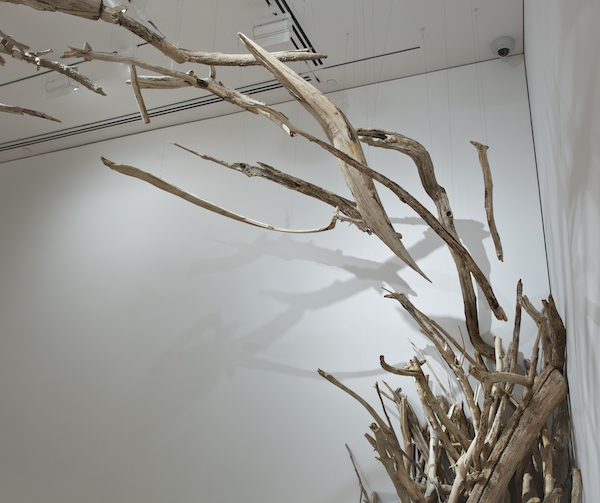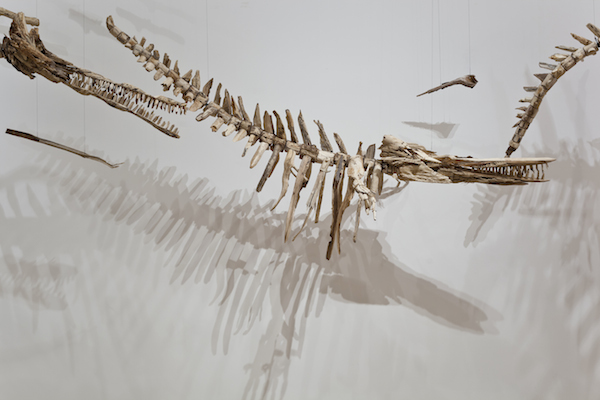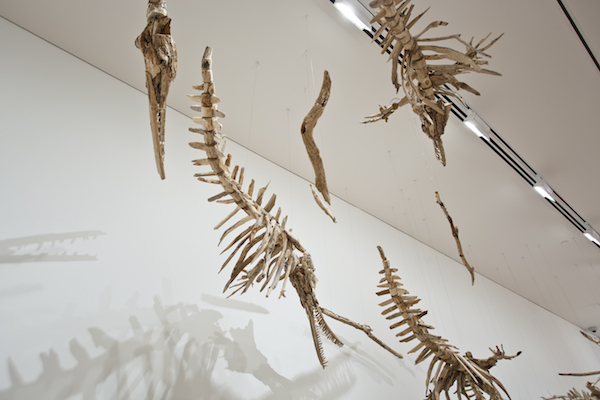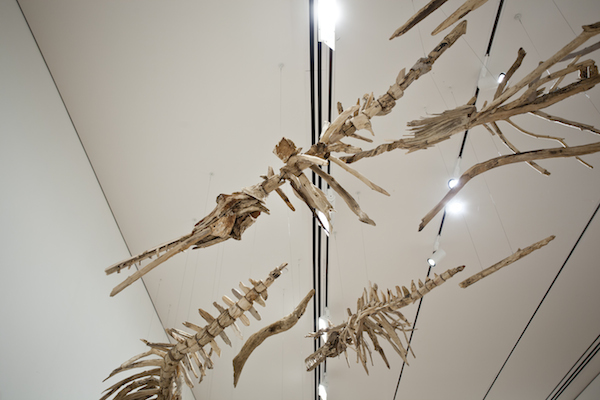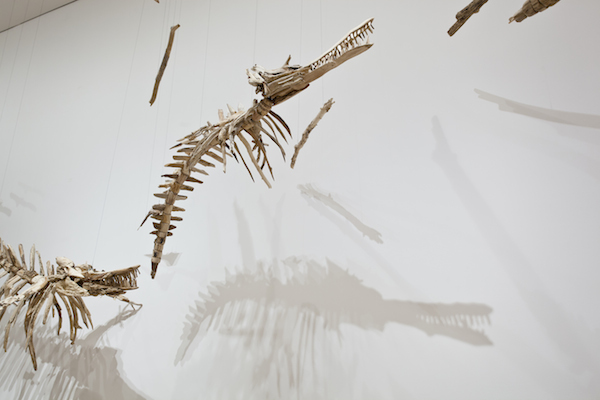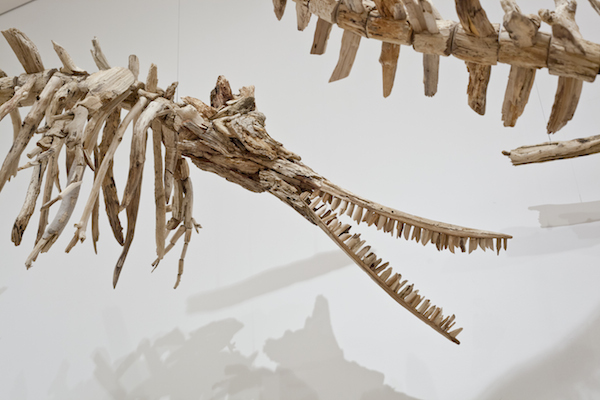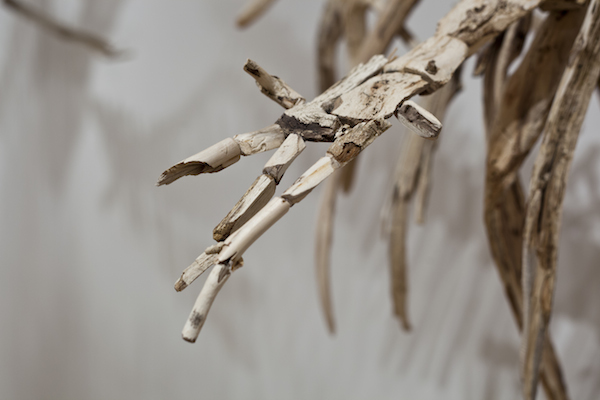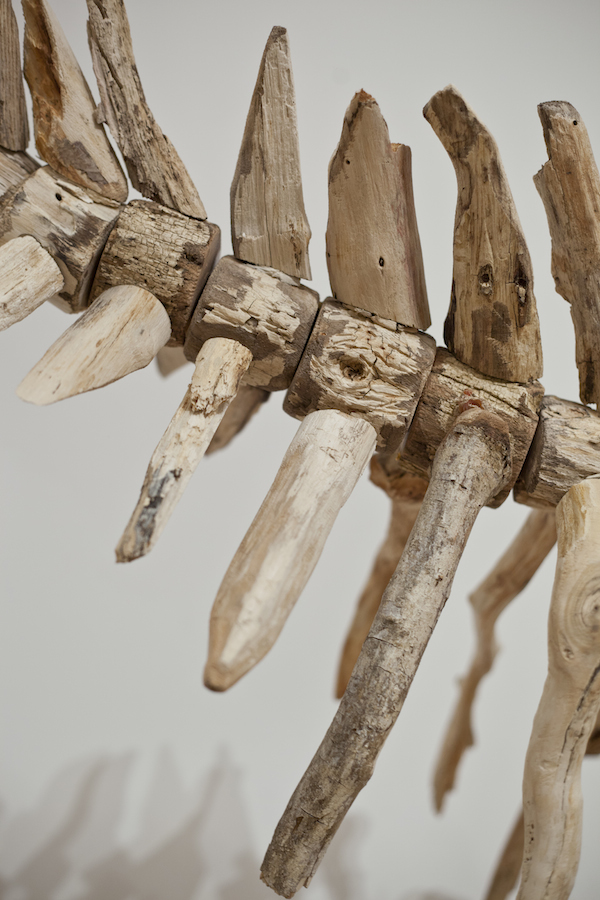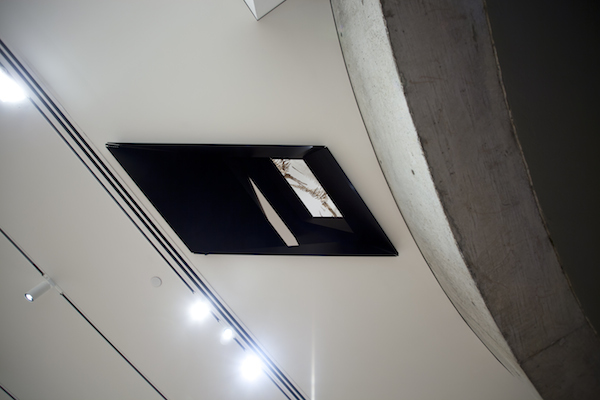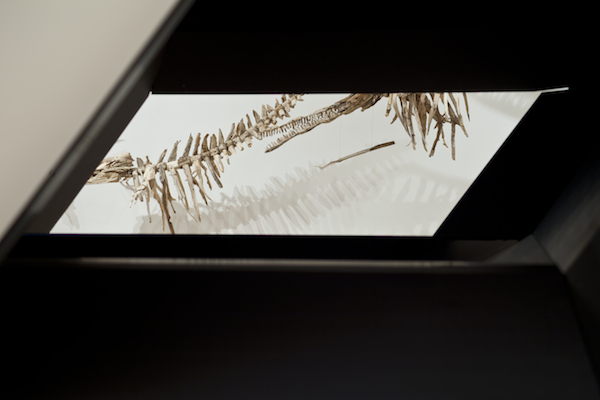Flight of the Baiji is part of the Baker Artist Awards Exhibit at the Baltimore Museum of Art. Cara Ober interviews Baker Artist winner Jonathan Latiano about his new project.
In the upstairs gallery of the BMA’s Contemporary Wing, Jonathan Latiano’s driftwood installation, ‘Flight of the Baiji,’ immediately reminds you of other monumental animal-inspired installations, like Cai Guo-Qiang’s ‘Head On‘ and Ai Weiwei’s ‘Snake Installation.’ It seems even more appropriate, then, in the visual context of these famous Chinese artists, that Latiano’s subject matter is the extinct freshwater Baiji dolphin, from the Yangtze River of China.
Latiano’s version is slightly sinister because the school of dolphins swimming overhead is rendered as skeletons made of bleached driftwood. Although close to anatomically correct, their long, grinning mouths with prickly teeth are especially menacing, but their placement in a graceful arc, suspended from the ceiling creates a ‘long view’ first impression that is elegant and awe-inspiring.
According to Michael O’Sullivan, in a Washington Post review, “The piece is both beautiful and vaguely macabre, in a way that a similar installation in a science museum could never be.” This comparison – the actual to the imagined – illustrates the purpose of the artist within contemporary culture: to present a version of the truth that is more arresting, more dramatic, and that captures essential qualities that make a subject more true to life than a scientific explanation.
O’Sullivan continues, “We’re used to looking at fossilized bones and taxidermied animals in museums that showcase that sort of thing. But there’s something in that more clinical context that allows us to see them as artifacts instead of once-living creatures. Paradoxically, by distancing us from the real animal, Latiano brings us even closer to them. His figures are make-believe, fashioned from wood, not bones. But hanging over our heads, close enough to touch, they’re ghostly reminders that we, quite literally, swim in the same stream.”
Latiano’s first museum effort has brought him to new, narrative subject matter and brand new materials. The installation has hit a few rough spots already. When I came in for a visit, a staff of museum conservators were already hard at work, repairing a spot where the piece was coming undone. I think it should be noted that Latiano took great risks in creating this installation – both stylistically and technically – and that this willingness to forge ahead into unchartered territories is the mark of an artist who is going places.
Insider tip: The piece’s placement next to Sarah Oppenheimer’s permanent installation provides several unusual ways to view and encounter Latiano’s piece – from below, from the stairwell, and through the gallery wall. Make sure you take advantage of this opportunity when you visit.
Latiano agreed to answer a few questions about his new work, on display at the BMA through April 6, 2014.
Cara Ober: How did you find out about this type of dolphin? Why do you find them a compelling subject?
Jonathan Latiano: I have been following the story of the Baiji river dolphin since around 2006 when, after an extensive scientific survey of the Yangtze’s River, which yielded no signings of a single individual, the species was first categorized as functionally extinct.
I am attracted to these grayer areas of science, particularly the idea that, once something has been proven to exist it is incredibly challenging to prove that it no longer exists. Almost certainly the Baiji are all gone, if there are individuals still out there in the wild it is widely believed that the population numbers are no longer viable to genetically sustain itself. The Baiji river dolphin now exists in a kind of limbo straight categorically, that is functional extinction; it may take years if not decades to conclusively prove that they are definitively gone.
CO: What do you hope viewers to learn – either about themselves or about the dolphins, the environment – from this exhibit?
JL: The biodiversity that our planet holds is one of the true gems of the universe, the loss of any species is disheartening and the rate of this occurrence is growing exponentially. Flight of the Baiji isn’t a political or environmental activism piece, but a monument to the notions of loss.
This project is about trying, as member of the species whose actions in the Baiji’s environment caused their extinction, to have a dialogue with this creature. It is a futile dialogue, as no matter what I build, who I talk to, how much time I spend thinking about the Baiji, the damage is already done. I will never truly know this animal. More importantly, no one, besides the handful of people who have physically interacted with these animals in the past, ever will.
CO: How did you create this work? Where did you find the parts? How did you put it together?
JL: The pile at the one end of the gallery and the Baiji skeletons that emerge out of it are constructed out of driftwood collected by hand from local fresh water rivers and lakes. It was important for me try and spend as much time with the Baiji’s natural environment as I could, but, since I was unable to travel to China, these rivers and lakes served as an analogue.
Once the driftwood was collected it was thoroughly cleaned and then bleached. This bleaching process not only altered the color of the driftwood, which likened it to bone, but also accentuated all of the delicate textures that separate it visually from saltwater driftwood. Each bone was then hand carved.
I tried to be as true to the Baiji’s actual anatomy as the material would allow. The entire process of construction was aimed at an attempt to better understand and have some kind of conversation with a creature where that dialogue was physically not an option anymore.
CO: Tell me more about the glowing disc at the end of the room. How did you create it and what does it mean? To me, it seems like a symbolic setting sun, and also an interesting visual way to light the objects – seems to create a silhouette effect from one end of the room.
JL: I wanted the Baiji skeletons to form only momentarily within the gallery before dispersing into smaller, more refined fragments. The glowing dome at the far end of the gallery is fully intended to resemble a setting sun. The silhouettes and shadows that are created by the dome are important to the installation and the overall feeling of the piece. The pure, almost quiet, nature of the light is meant to contrast the jumble of activity created by the driftwood pile on the opposite end of the gallery.
More information is available at the artist’s website, the BMA, and the Baker Artist Awards. The Baker Artist Awards website and awards were established by the William G. Baker, Jr. Memorial Fund and are a program of the Greater Baltimore Cultural Alliance. All photos are courtesy of the artist.
* Author Cara Ober is the editor and founder of Bmoreart. She also participates every year in the Baker Artist Awards!
